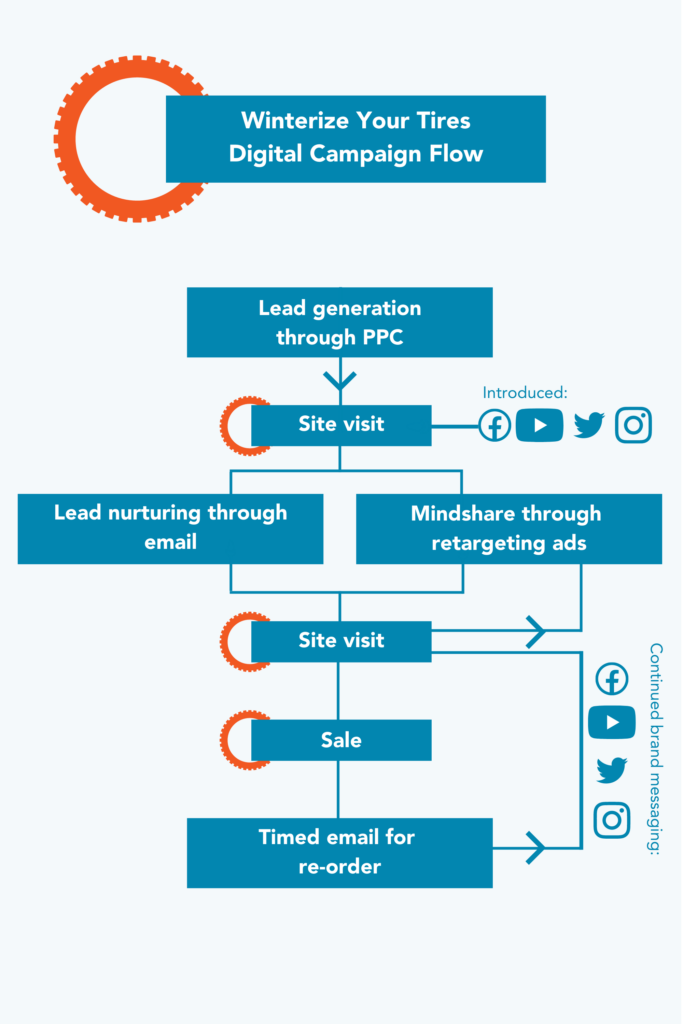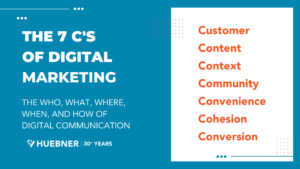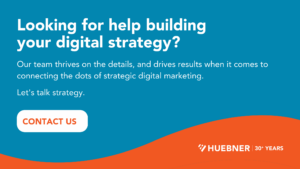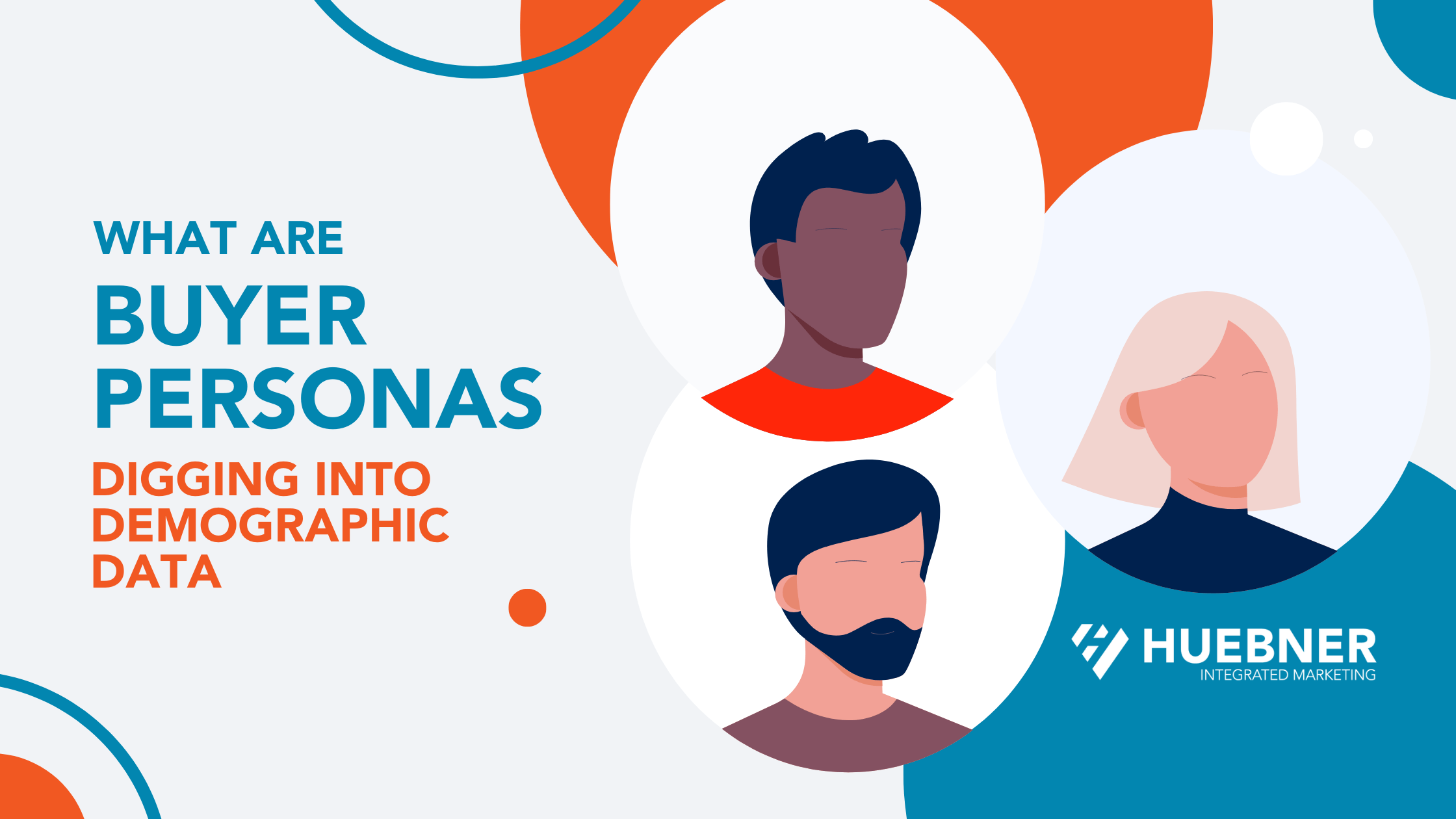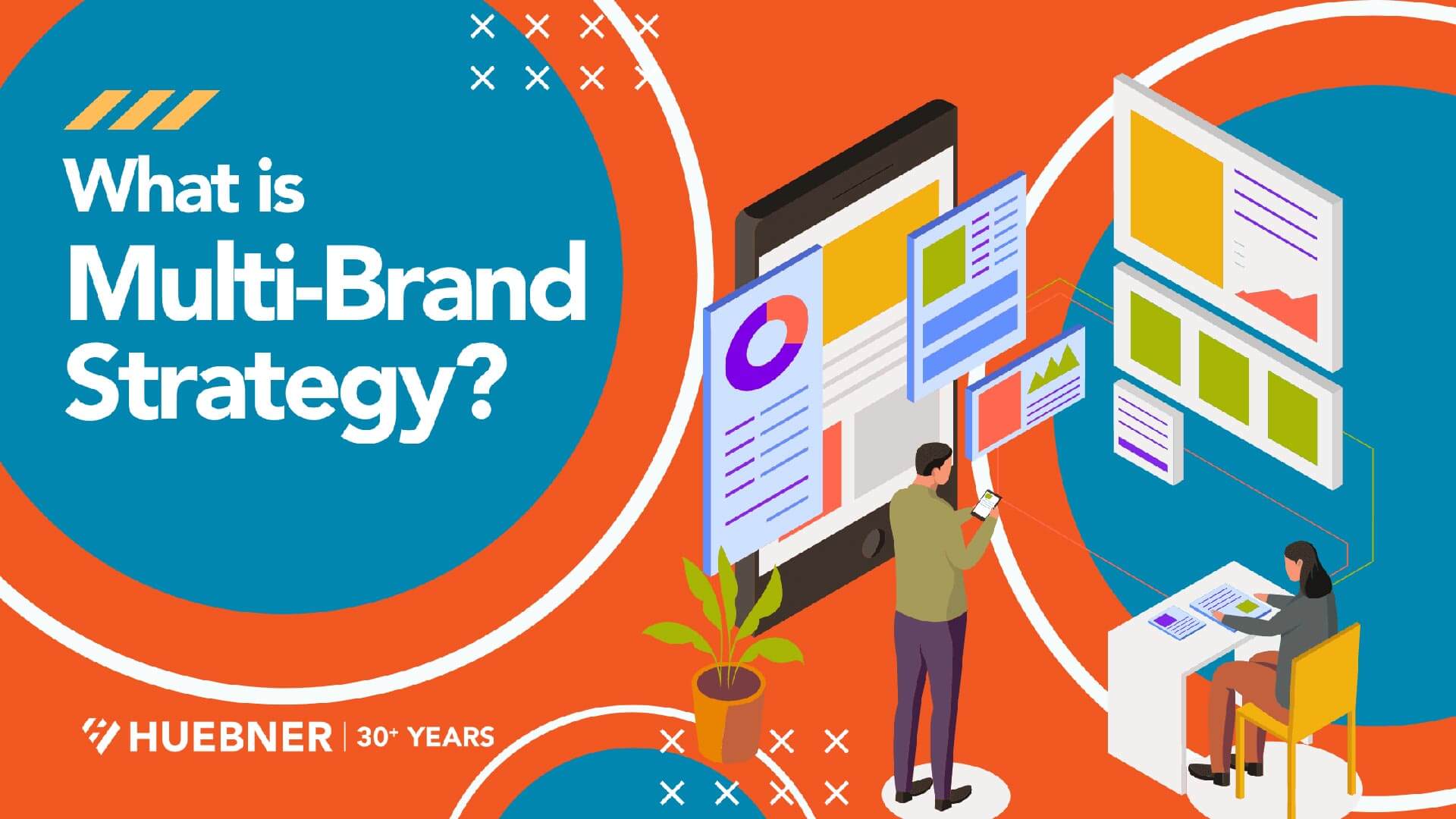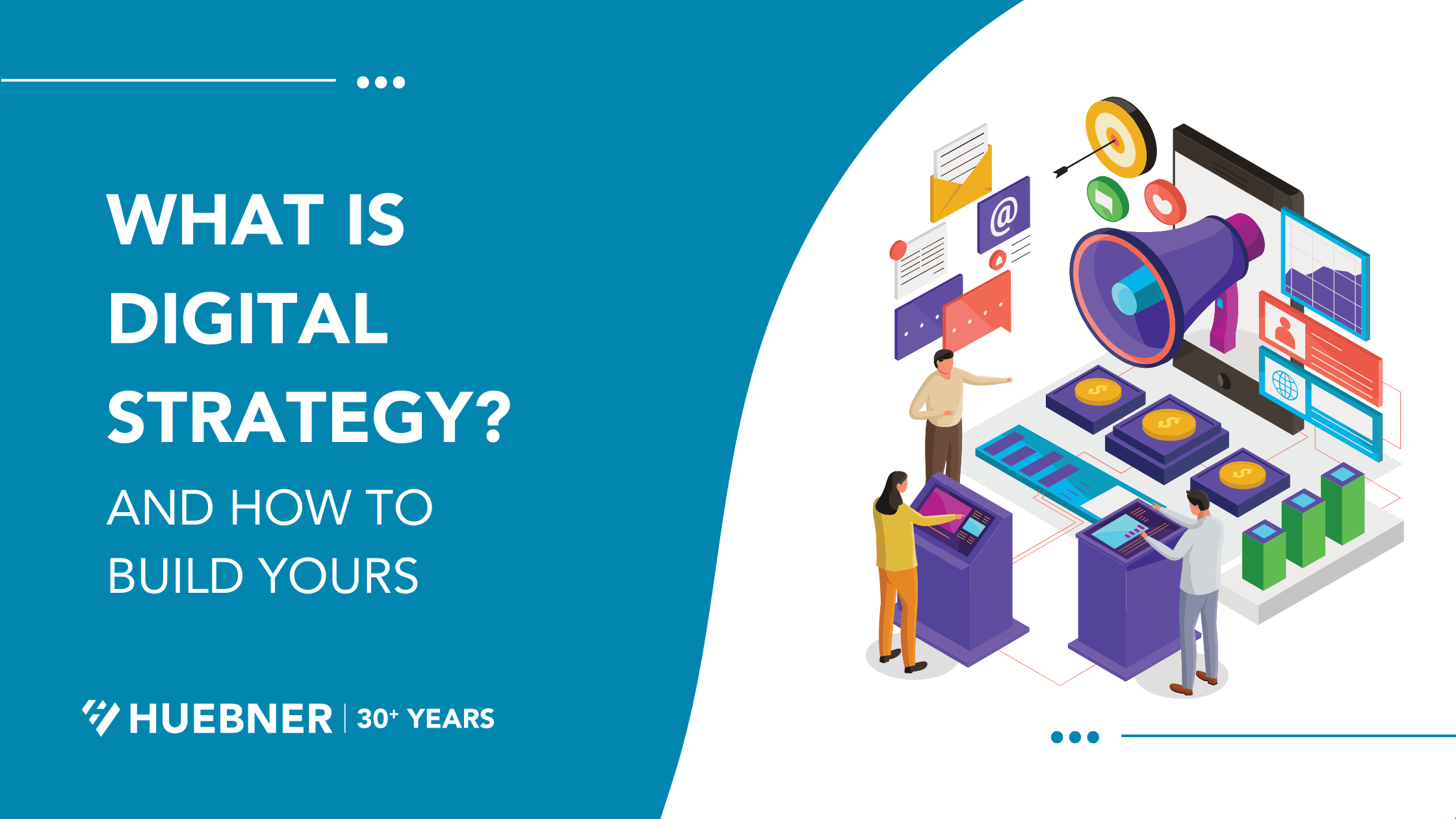
What is Digital Strategy? (And How to Build Yours)
Does your brand have a solid digital strategy for the coming year? If not, you should, and it’s never too late to get started.
According to Gartner’s annual CMO Spend and Strategy Survey, digital marketing accounts for 56% of businesses’ overall marketing budgets. And its share of the spend is only expected to increase over time. Digital marketing is no longer a secondary avenue for brand growth, but a non-negotiable for B2C and B2B brands alike. And its complexities require more than a see-what-sticks approach. Strategy is key to its success.
Read on to learn why a digital marketing strategy is so important, and what to consider when incorporating it into your overall marketing strategy.
Digital marketing is no longer a secondary avenue for brand growth, but a non-negotiable for B2C and B2B brands alike.
WHAT IS DIGITAL STRATEGY
Digital strategy is the plan to relay goal-oriented messaging to your audience through your different online channels. It should be fully integrated across your company’s online presence (web, apps, email, social, and ad) and used to drive traffic, assist in the conversion process, and ultimately create a cohesive online experience for the user. Because of digital’s tendency to shift quickly, digital strategies can be used for shorter-term growth objectives—quickly measuring sentiments, boosting audience growth/engagement, and relaying time-sensitive information.
The need for digital strategy among B2B businesses is just as great as it is for B2C for D2C operations. Your audience is online too, and tapping into their channels can help – for example – gauge new product designs/releases, increase brand awareness before a trade show, and let your customers know about promotions. But wait, there’s more.
KEY BENEFITS OF DIGITAL STRATEGY
Aside from the obvious benefits—marketing agility, increased messaging capabilities, and access to a wide audience—there are some specific benefits that only come with consistent, organized digital efforts.
Trust Building
Because the internet isn’t going anywhere, today’s customers/clients have much different purchasing habits than they used to. Some 82% of buyers research a product online before committing to a purchase, according to Forbes. Just as word-of-mouth referrals and rep relations are integral to building brand trust, your online presence can and should facilitate the same level of certainty—if not higher, through a cohesive presentation, easy access to information, and accessibility.
Boosting Customer Confidence
Gone are the days of printed headlines that you hope will work. Digital marketing allows you to craft copy and design that truly resonates with your audience. Through thoughtful, strategic targeting—made possible with data inputs from website use, email readership, ad reactivity, and even social listening—you can reach your target audiences with unique and optimized creative. Not only does the presentation of a capable brand boost digital responsiveness, but it also improves customer/client confidence.
Improved Communication & Retention
It’s not just about who sees your online marketing. It’s about who reads it. Digital marketing truly becomes impactful when you open up the opportunity for conversation. With access to data such as website page views, average product lifespan, standard time between orders, and even customer location, your digital marketing can be tailored to meet your customer’s needs, providing an opportunity for dialogue when your target audience needs it most.
DIGITAL STRATEGY IN ACTION
Consider this example of a digital strategy that revolves around buying habits and schedules:
You’re a tire manufacturer with distributors across the nation. As the season moves through fall toward winter, you begin a winterize your supply campaign.
Through PPC display and social marketing, you reach a targeted audience that should be considering their seasonal products—and website visits increase. Once your potential customer reaches your website, the opportunity to convert and retain begins.
With a simple email signup pop-up, you begin capturing leads—and valuable information about what’s important to your customers. Each lead, and information on page/product views, is then imported into your email service provider and added to two email flows: welcome and viewed product.
Welcome keeps you top of mind once they leave the store. It’s a good practice and certainly boosts revenue. But the viewed product flow has an opportunity to be a real money maker. A flow featuring the specs, reviews, inventory details, and promotions related to specific viewed products puts the information the user needs right into their inbox. Not only does it show attention to detail, interest in your user’s needs, and effort to provide relevant information; it allows you to “speak” to them on their own schedule—which can be priceless.
In addition to the email campaigns, website users can then be retargeted with display ads and served subtle reminders of your products, services, and promotions. From Facebook to YouTube, and the online magazines they read in between, your brand can stay top of mind as potential customers/clients go through their daily online journey.
Once that customer converts, you have yet another opportunity to keep them in the purchasing loop. Based on the style and number of products ordered, an email series prompting re-order can be triggered, inviting the user to revisit the site when their inventory dwindles. One click gets them back online and right back into your remarketing channels.
This is just the tip of the iceberg when it comes to digital strategy and the ways in which we can communicate with and retain clients/customers.
HOW TO BUILD YOUR STRATEGY
The leading methods of digital marketing are:
- Search Engine Optimization
- Pay-Per-Click
- Email & SMS Marketing
- Affiliate Marketing
- Content Marketing
- Social Media Marketing
Using data, you can begin to build a strategy that combines these methods into a cohesive presentation of brand, message, and value. The best way to develop a strong strategy is to implement the 7 C’s of digital marketing:
Let’s look at them, and discuss how they should guide your strategy.
Customer
Know your customer. Know what they want, when they want it, and how they want to receive it. Once you begin to understand the data around your customer behavior and preferences, you can begin to tailor messaging.
Content
Content is king. Creating high-quality, engaging, and unique content is key to building audience confidence and trust. The questions to ask when deciding on content are: What does your customer need to know in order to make a purchase? And what is the most valuable way to deliver that information?
Context
Your great product isn’t great if your audience doesn’t know how it will make their life better. Frame your content in a user-first format, discussing user benefits before or alongside product specs.
Community
Grow your network and build brand trust. People are more willing to commit to a product or service if it is backed by a community of individuals they feel are like-minded, according to Disciple. So get those reviews flowing. They can be used in social, display, content, and email marketing.
Convenience
Make it easy to buy. Convenience in digital strategy means knowing how to deliver the right information to the right person at the right time and on the right platform. Use your data. Dive into your customer journey and start building out content, email flows, and remarketing ads that make it easy to click and buy now.
Cohesion
People like to feel in control of their environment and choices, and that is easily emulated through stable surroundings. Give your client stability through consistent language, design, and campaigns across the platforms they use.
Conversion
Your conversion rate is the end goal, as well as the beginning of the next round of strategy. As a KPI, your conversion rate (which can represent sales, lead form signups, downloads, etc.) will tell you how effective your strategy is. Conversion data can include:
- Demographic information (age and gender, similar interests)
- User location (where they are)
- User sources (how they got to you)
- User keywords (what they searched if they came organically)
- Landing pages (where they landed)
- User journeys (what else they looked at)
- And more!
With every round of campaign conversions, you have an opportunity to gain insights on the tactics that work and revise.
SO WHAT’S NEXT?
We do it again. Test, revise, then test again. Convert, celebrate, then get back to work. Digital marketing strategy is all about using customer insights to tailor campaigns. Once you build your basics: your standard email communications, general branded ads, and landing pages, you can add on supporting digital collateral as your bandwidth allows. Test each addition and revise when/where necessary. Understand that consumers’ online behavior changes often and be ready to pivot when the data says it’s necessary.
Have patience, humility toward your data, and a little bit of fun. After all, that’s why we’re in marketing, right?



